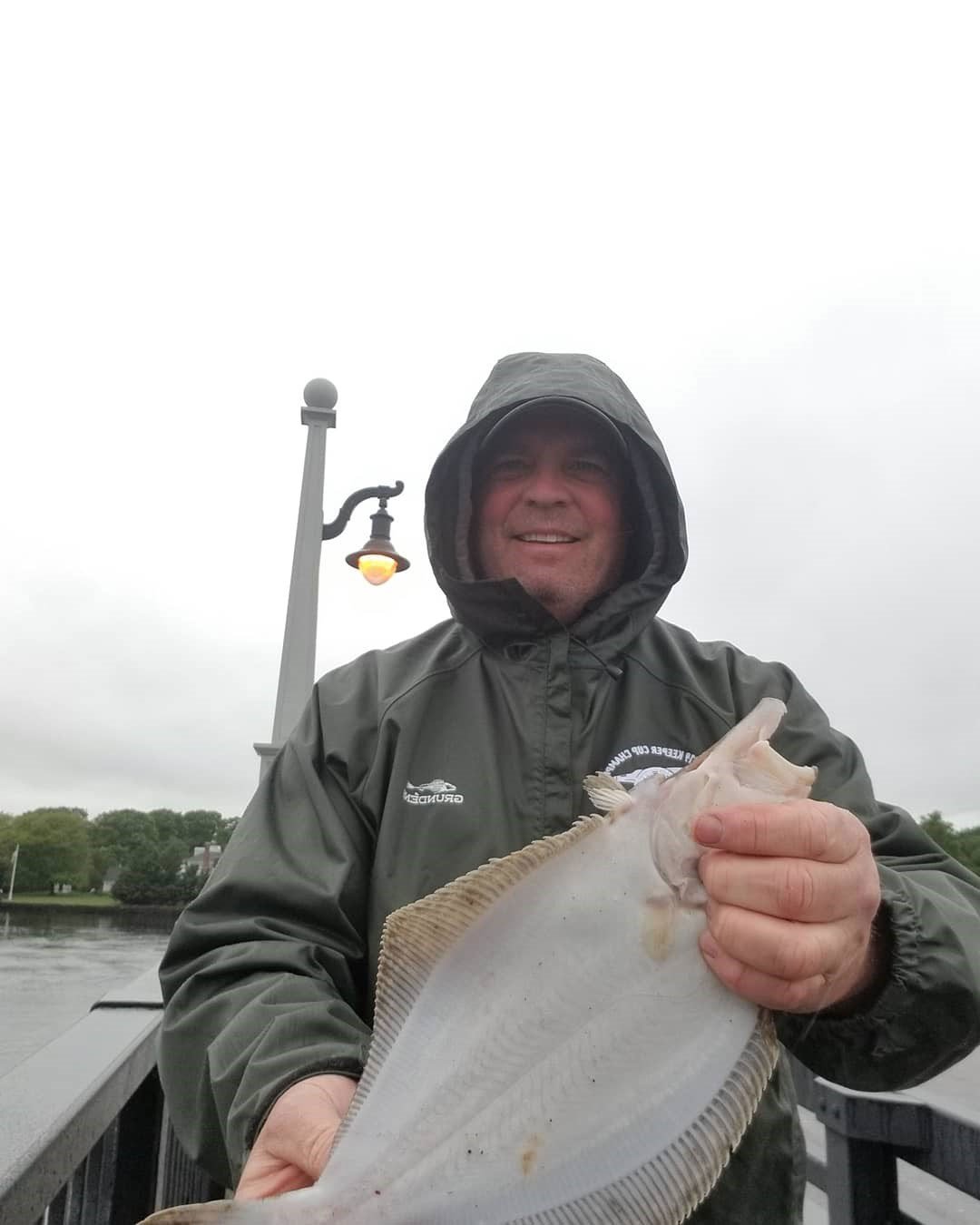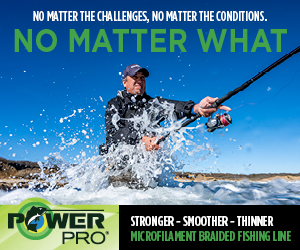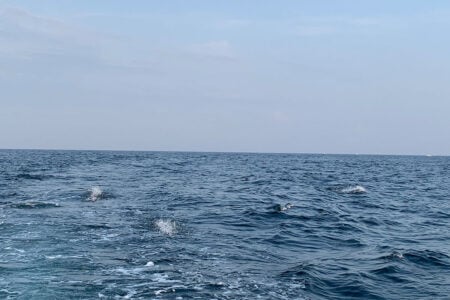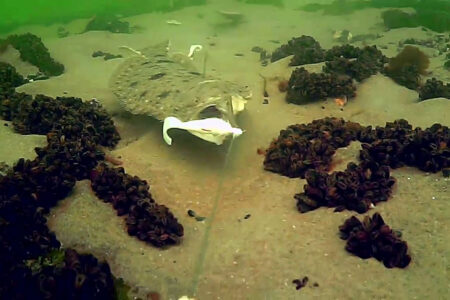
The Barrington River hosts a plethora of predatory fish and plenty of bait to keep them happy!
Have you ever fished the Barrington River? Most Rhode Islanders are unfamiliar with this small waterway that leads up to 100 acres of marsh and estuaries that feed and nourish the Narragansett Bays ecosystem. The river begins at 100 Acre Cove and flows south merging with both the Palmer River and Warren River. This hidden gem offers many awesome spots for spring fishing and there is plenty of access too. Along its length, anglers will find countless bridges, small rips, rocky sections, feeder creeks and points, such as Tyler Point, which make the river an anglers dream.
This river system is full of life, and lots of current, but most importantly, the Barrington River acts as the home and hatchery to many of the springtime baitfish we anxiously anticipate every year as the weather starts to warm. Most of the river can be accessed via Mathewson Road, and then further north off of County Street and up to Massasoit Ave, known to most locals as the White Church Bridge heading into 100 Acre Cove.
Bait, Bait & More Bait!
As we transition into spring these waters warm quickly. As a kid growing up in the town of Warren I would fish the Barrington River riding along the East Bay bike path with a bucket of fresh clam bellies and an old Shakespeare rod and reel combo, I’d stop at several spots along the way scoring fish on nearly every drift, at times. When the bigger bass moved in, I’d switch over to mackerel and pogie chunks.
As I got older and more knowledgeable I started to discover more and more about this vast ecosystem, taking notes about tides and moon and also figuring out when the herring would come back. Every spring the herring run up the Barrington River loading up into Prince Pond and also heading up the Running River, which leads into the Turner Reservoir in East Providence. But it’s not only the herring that attract the many predatory fish into this river system, the spring moons also bring cinder worm hatches from the end of April through most of May. It doesn’t stop there, the river is also host to large pogies in the spring that come to spawn. And while we are on the bait subject there are loads of silversides, mummichogs and more recently we’ve started to see squid, and mullet. Lastly, let’s not forget the millions of crabs and grass shrimp that live here, attracting an array of predators.

Barrington Breakdown
With the herring and other baitfish returning to the river, there are striped bass are right on their tails using the many rip lines and fishy structure along the river to ambush their prey. It’s not all about the bass in this river though, tautog are a season long resident here, especially in and around the bridge pilings and along some of the few rockier areas of the river. Toward the end of May and into June, as the water warms, bluefish along with weakfish will frequent the river taking advantage of the plentiful baitfish.
Many people fish from the bridges and these are great spots, but landing a big fish can be tough in the fast current, take a cue from the locals and get yourself a bridge net so you’re prepared when you hook a big fish. In my experience, the best fishing around these bridges and adjacent structures happens at night. These areas are mostly well-lit and you will find many shadow lines to fish. Striped bass nose up to these shadows, hiding in the darkness and looking out into the light for any baitfish that might drift through. Early in the season try swimming a small paddletail bait or even a small bucktail along the shadow lines of the bridge structure, most of the time the fish will be waiting there to ambush anything that swims by.
Don’t count out the shoreline along Mathewson Rd. There are many spots with small rips and large drop offs along the inner channel that hold lots of hungry fish. Over the last couple of years I’ve dedicated a lot of time figuring out these spots which have produced some of my best catches. Topwater plugs have proven to be great fish-finding lures as you walk along the shoreline and cast. There are countless dock pilings, eddies, rips and bends in the river that hold fish. Once you start getting a feel for what the fish are holding on that day it’s often possible to develop a pattern, and you can walk the river looking for similar spots and – odds are good that you’ll be finding more fish. If the fish just aren’t feeling the topwater game, try fishing the bottom, switch over to a swimbait and vary the weight of your jighead to fish different depths based on tide movement.
Lures & Jigs
We all have our go to lures, the lures we have the most confidence in using. Predominantly i like to use a 4- or 5-inch soft plastic swim bait with a paddletail. I also prefer to use the smiling’ bill bucktail in white with a red pork rind when the current is ripping. As May nears its end, lead-headed offerings may also score a few keeper fluke, which is always a nice bonus!
As with all artificial fishing match the hatch try to find out what the fish are foraging on, and a side note if the cinder worm is on the bass will be very picky and hard to catch i know this from years of fishing the area. Some of the tricks to try when there is a worm hatch is down size your presentation. If the worms are visible look down and watch them for a minute or two and see how they move and at what speed. Normally I will start off trying a pink zoom fluke with no weight on it basically just letting it flutter in the current. Another bait I like to use is a live sandworm or even the Berkely Gulp sandworm; both have produced for me, but you must have lots of patience.

Bait on the Barrington
Sometimes the fish won’t take artificials and sometimes I just feel like bait fishing. When I do find myself reaching for the real stuff, I typically use clam bellies or chunks of mackerel. My goal is always to make the bait look as natural as possible in the water. When I’m fishing in high current areas, I drift the baits down with the tide, doing my best not to influence the drift with my line or rod, feeling for any sudden changes in the drift that might signal a hit. If I’m fishing a slower portion of the river, I favor a fishfinder rig and try use just enough weight to keep the bait on the bottom. One tip I can offer is to always fish away from the many moorings in the river, they are magnets for bait rigs and you will usually hang up quickly.
If you plan to target blackfish, you can head right for the bridges or do some exploring to find a few rocky spots that will also hold tog. When fishing the bridges, the pilings hold lots of fish, but there is also structure beneath the bridge spans, just make sure you’re paying attention to boat traffic and get your gear out of the way before any vessels pass below you and snag in your line; that’s a battle you’re not going to win! I prefer to use tog jigs in the river, I typically use weights ranging from 3/4 to 2-1/2 ounces, I just think they’re easier to fish and to carry around from spot to spot. However, if jigs aren’t your thing, by all means, use a rig and you will catch fish.
Expectations
Springtime on the Barrington river host’s many species of fish and plenty access to fish for them. Over the Last couple of years I’ve really tried to dial in the best spots and fished the river pretty hard. Many anglers seem to be unaware of how great the fishing can be in this mini ecosystem. And, take it from me, it’s not just the spring that produces great fishing; we have fish here all season long and the fall can be epic! Best of luck if you take the time to try it and I hope to see you at the river, tight lines!!




